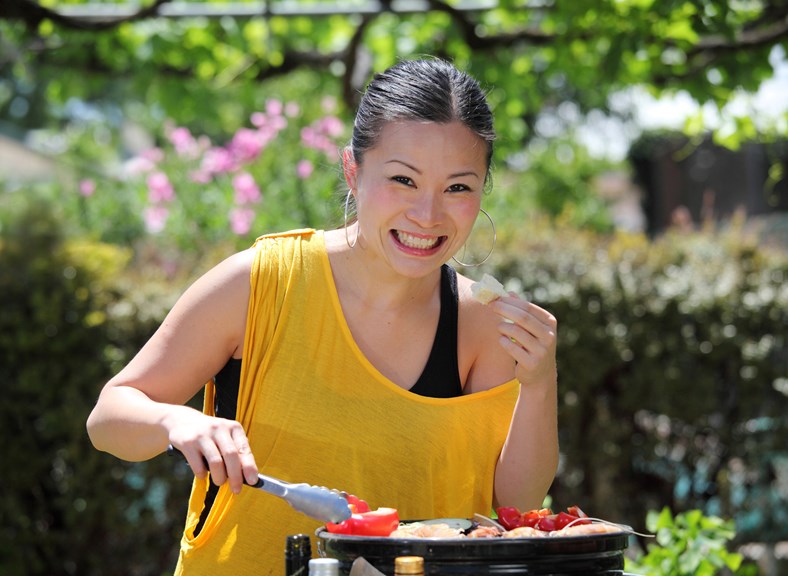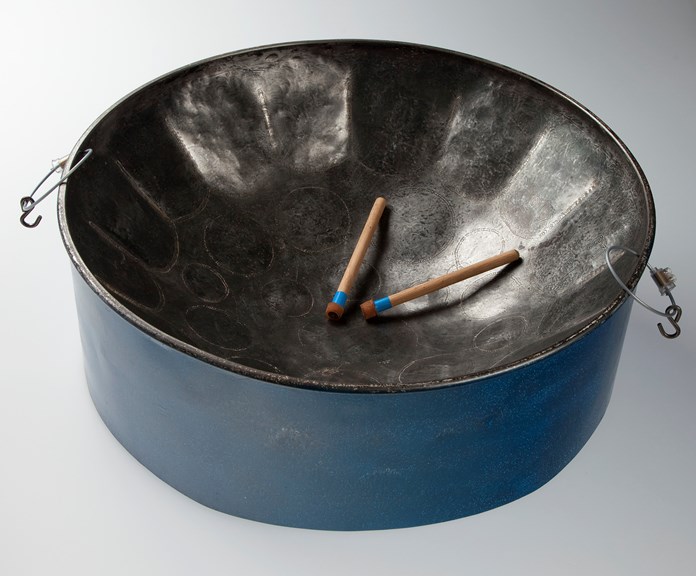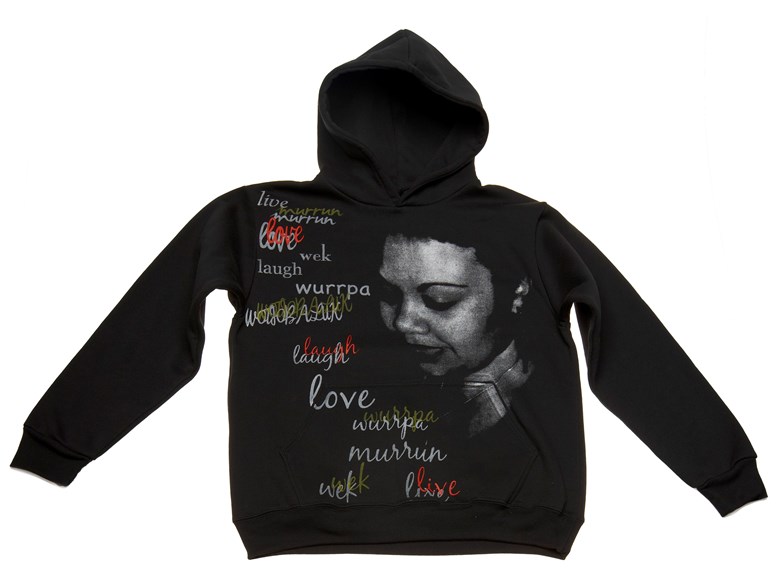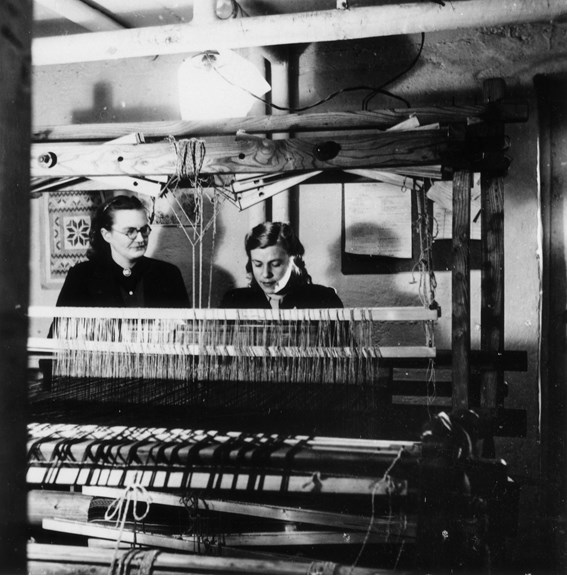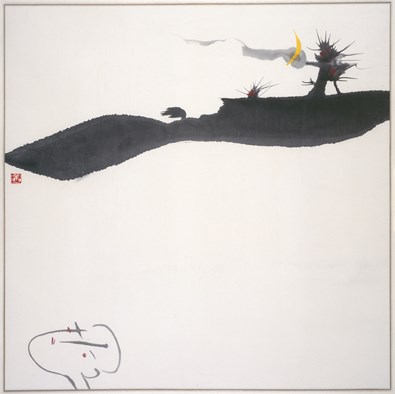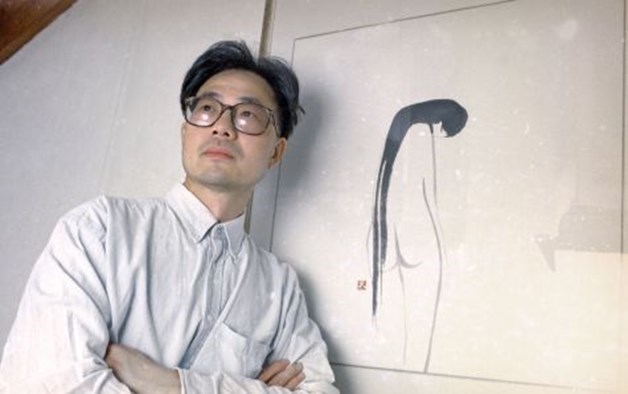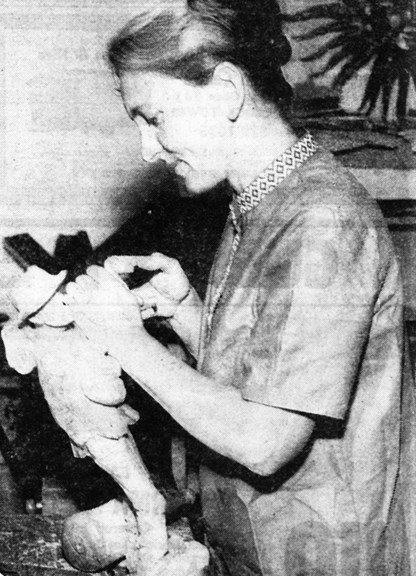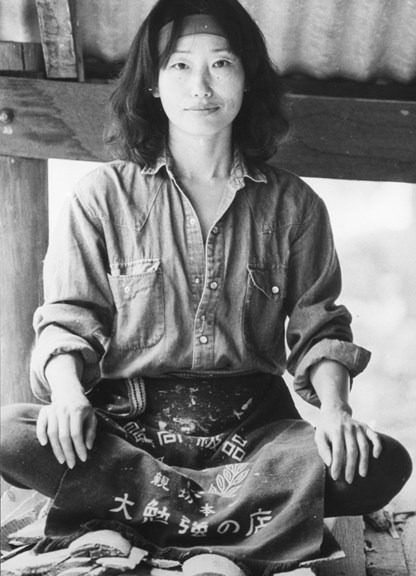People Like Me
We know when we belong. We can see ourselves reflected in others. It might be a community or internet group. It might even be a nation. Fitting in with other people may not be easy. We start searching. We may need to invent our own club. We seek opportunities to connect with others.
We know when we belong. We can see ourselves reflected in others. It might be a community or internet group. It might even be a nation. Fitting in with other people may not be easy. We start searching. We may need to invent our own club. We seek opportunities to connect with others. Why do we need to belong? Who do you belong with?Poh Ling Yeow, Cook, TV Presenter, Artist, 2011
Why do we need to belong? Who do you belong with?
Explore these stories about belonging.
Sometimes we think we know ourselves inside out. But do we?
We might discover something new or feel something is missing. We need to know more.
We begin searching. At first the pieces don’t make sense to us. We may be shocked. Some we push aside. Other pieces we welcome and hold close. It all makes sense now. Or does it?
Ever thought there’s more to you than you realised?
Meet some people who continue to search for their identities.
An identity lost and found
Growing up, Adam Nudelman didn’t know that his paternal grandparents were Polish Jews. After their death, he searched for the remains of his family past.
All he found were piles of dusty shoes, tools and boxes — decades of his grandfather’s shoemaking production, decades of silence.
Through these objects and his art, Adam tries to make sense of his family’s hidden story.
Adam Nudelman's story
My name is Adam Nudelman, I was born in 1967, and I currently reside in West Preston.
On my maternal side I have a long-term, Anglo background, and I know my family history. I know that my grandfather was a soldier who was in the Second World War, I know that I have great-uncles who were in Changi, and I know I have relatives who have fought in the First World War and so I have a quite a clear and definitive picture of my maternal, Anglo, heritage, but it’s an amazing sort of a thing to know that there’s another, large side of myself, another part of my family history, another part of who I am.
It’s been quite an amazing journey that, once I realised that I have a Jewish background and I’ve engaged myself to learn as much about that background as I possibly can, both in my own personal family but also in the wider, and Jewish cultural context. I’ve come to a number of places where I understand that there’s certain things which are innately within me, in terms of there’s certain behaviours, certain moral ways of thinking, certain cultural ways of doing things, which are given to you, not just as a form of behaviour but I think, you know, genetically or through your DNA, you inherit certain aspects of, you know, who you are and where you come from as well.
My daughter who’s now 25 is sort of looking at those aspects within herself, and exploring similar sorts of issues, and it’s something you need to arrive at, yourself, and it’s amazing how some people never question their identity, and their backgrounds, there’s no, push, toward it, and there’s others, like myself and numerous other of people that I know, who get to a certain period in their life and it’s a question, a burning question, or a burning desire to be pursue it with, and the older you get the more you pursue it, in a way.
Carrying memories
Visopiano Sanyü is Naga, an ethnic group straddling the border of India and Burma, and Australian. But Visopiano grew up mainly in Melbourne, not Nagaland, so Visopiano feels that some people both within and beyond the Naga community see her as ‘unauthentic’ as she does not speak the language.
As a very young child, she had a basket like other girls in Nagaland. It was traditionally used to carry wood and as a toy to play with. This basket which is on display in the exhibition links Visopiano to Nagaland. It is a symbol of her ancestral heritage, an object she can touch and hold while contemplating another life, had things been different. It represents her ongoing search to reconcile the different parts of her identity.
Visopiano Sanyü's story
My name is Visopiano Zokimi Sanyü, Visopiano is from my father’s side, it’s Angami, which is a tribe, a Naga tribe, and Zokimi is from my mother’s side, it’s a Mizo name.
My family moving to Australia, has definitely formed who I am today. I speak now with an Australian accent, so obviously that’s one thing, but I truly feel Australian. I moved here when I was quite young, so I guess that’s part of it, but I’ve also integrated quite well into a certain aspect of Australian society, and that hasn’t necessarily happened, with my two brothers, so I feel very grateful to have moved here actually, and specifically to have moved here as well, not just to have grown up here and been here my whole life. I really like that different aspect, to me, the fact that I came from somewhere else and I have that experience and I that I also have the richness of this culture.
I feel that I’m at the very front of Australia, you know, and I feel like a lot of the other young Australians, these days, you know. We all love to travel, and we all love to take on different aspects of different cultures and you know, music, everyone loves to know music from different countries and things like that, and it’s very much that idea of a global citizen, that I mean that’s very popular nowadays and that’s where I kind of fit in, I suppose.
I have had, growing up, and not so much now but especially a couple of years ago, this fear that I wouldn’t be accepted, by people back home, because they’re authentic, and I’m not. And the closer I get to the day that we go back home I think the more relaxed I am, about that, especially with my mother’s advice, like I said before, that I am as much as I want to claim I am, you know, from either heritage, from Mizo or Naga, and the fact is that they, I mean my family for example, back home with my clan, will only want to claim me in return.
Many clubs
Kat Clarke is a young Wotjobaluk woman from western Victoria. She writes poems, sings and paints in order to explore who she is. Her poems express family stories, ancestral connections and her own identity as a proud, strong Aboriginal woman.
Like many teenagers, Kat Clarke grew up wearing hooded jumpers. They have become symbols of youth and independence — even rebellion.
To explore her Aboriginal heritage, Kat designed her own distinctive hoodie. It is an expression of the different groups she belongs to — friends, peers and Wotjobaluk.
Kat Clarke printed her hoodie with the western Victorian Wergaia language words wek (lives), wurrpa (loves) and murrun (laughs) to express her pride and pleasure in who she is.
Kat Clarke's story
My name is Katherine Clarke. I was born here in Melbourne. I’m very proud to be a Wotjobaluk woman, and you know, it, I base my whole life around it really, you live it when you’re Indigenous you live it 24/7 and you know, it never ceases.
Being a big girl growing up as myself and I had a lot of that issues and but Mum always pushed me into being a leader so at that same time I had to battle with being up front, as a big girl, you know, and as well as sort of accepting that I’m black as well and that, you know, I’ve got that other problem that I’ve got to deal with, so you know, only just dealing with being black 24/7, dealing with being a big, 24/7. So you’re not getting the boyfriends as a girl, and you’re not getting, you know, the certain friends and you’re getting not picked for certain sports and things like that, you know. So it can really down-hearten you as a kid, growing up and affect you as an adult, personally and professionally, but in your development as an adult, growing up.
When I wear my hoodie, I know, I know that it’s no one else’s, that hoodie, you know that the feeling of knowing that no one else has this hoodie. You’ve got originality, you’re not a part of, the Eminem, you know and the whole 2Pac, and the Snoop Dogs and you know all that whole brand stuff, and you’re not part of a label, you know, yeah and just not being part of that whole commercialised, media world, in a sense, to where you’ve got something original, it’s unique, and one of a kind, or well five of a kind, you know, one of five, you know, and it’s knowing that yeah, it’s you. It’s you know, when I wear it I know that this is me, it’s mine, it’s no one else’s, it don’t belong to no one else, and there ain’t anything like it, so that sort of brings a bit of pride and just, yeah, it’s mainly pride more than anything, to it.
I wanted it more for, to show that young girls can go out, wear these hoodies, and own them, show that they know what the, you know, show that they can hang and be part of that, whole men’s sort of world, because it is a hip-hop are, you know, hoodies, it’s a real men thing and they see it as a gang thing, and it’s more yeah, it’s very, very male in that sense, so I really wanted it to show that women can do it and flaunt it and, you know, make it look good.
We write, paint and perform to express ourselves and connect with people around us.
A life’s work may be preserving and passing on artistic traditions — or experimenting with new art forms and techniques.
It takes a special kind of courage to reveal your pain, laugh at yourself or receive disapproval. Some people risk the spotlight, others are intensely private.
How would you write your life story? What would your self-portrait look like?
Explore how these individuals and groups find ways to express who they are.
Awaken
Ceremony is one thing, and dancing and sharing our Creation stories is something that we get to do through Djirri Djirri.Stacie Piper
Stacie Piper, Nanjera Pender and Mandy Nicholson are Wurundjeri, Dja Dja wurrung, Ngurai illum wurrung women (Nanjera also has Gunai heritage), for whom performance is a vital part of reviving and passing on culture.
In 2013 Mandy founded the Djirri Djirri Wurundjeri women’s dance group and as members Stacie and Nanjera reconnect with their language, song and dance. In 2019, the Djirri Djirris were filmed performing a Murrum Turrukuruk (coming of age) ceremony on Wurundjeri Country at Coranderrk Aboriginal Reserve in Healesville.
Humour
I think the strength of our comedy lies in basically the fact that it’s built on almost entirely true stories and our own experiences, which a lot of other people have had.Aamer Rahman
Nazeem Hussain and Aamer Rahman are stand-up comedians who have collaborated as 'Fear of a Brown Planet' since 2008.
Nazeem’s parents are from Sri Lanka and Aamer’s ancestry is Bangladeshi. Drawing on their common faith in Islam and their respective cultural heritages, they use humour to confront racism and make fun of cultural and religious stereotypes.
Reveal
It is a really ambiguous art form. I think of it like a room, you open up all the doors and hopefully people come in.Andy Jackson
Andy Jackson is a Bendigo-born poet who moved to Melbourne in 1989. His family have been in Australia for many generations and are of English, Scottish and Irish descent.
Andy's poems reveal the pain and humour of his life experiences. He explores what it means to inhabit a particular body and challenges social rules and norms.
Preserve
Weaving and thread and designs, they were very dear to me. Every free moment I have devoted to finding new designs. Latvian designs. No others.Anna Apinis
Anna Apinis’ passion for weaving led her to meticulously record traditional patterns in Latvia. After migrating to Australia in 1950, she used these Latvian designs to produce weavings on the large floor loom she had made from discarded timbers in a German Displaced Persons’ camp after World War II.
Celebrate
Every stole I have worn, I have made. I take great pride in putting a new stole on and explaining the symbolism.Eseta Meneilly
Eseta Meneilly is a Uniting Church minister who migrated from Fiji in 1987. She makes her own ecclesiastical stoles that merge her Fijian heritage and her Christian faith. She uses elements of Fijian tapa design and Christian and Fijian symbols.
For Eseta, the stoles are an opportunity to connect with her congregation through her heritage and her needlework. In the stole on display, the conch shell calls people together and the boat is a symbol of Fiji.
Combine
My Chinese style painting wasn't all that traditional, it has a modern feel because of the western influences I had absorbed.Lou Xiang
Born and educated in Shanghai, China, Lou Xiang evolved as a painter from producing political propaganda to western artistic styles. When he migrated to Australia in 1988 he had already discovered the joys of traditional Chinese painting.
Lou Xiang fuses the drama of an Australian bushfire landscape with his own interpretations of traditional Chinese brush and ink painting and calligraphy.
Discover
I feel that when I am cooking and when I am painting I feel most comfortable with myself, that's a really lovely feeling, that feeling of being able to create.Poh Ling Yeow
Poh Ling Yeow is a Malaysian-born cook, painter and television personality. She grew up in Adelaide feeling a sense of being both very different and yet belonging. In her twenties Poh discovered that the fusion of art and food enabled her to re-discover her cultural heritage and express her creativity.
Inspire
When you're dancing you forget everything, everything bad that happens, so it’s really awesome to dance.Olina Lulerhe
Dance and music bring comfort and hope to members of the Angels' Voices Band. The Mukasa family formed the band in 2006 and have since welcomed new members from the growing Congolese community in Shepparton.
Through music and dance they maintain Congolese traditions and incorporate contemporary elements through entertaining and reaching out to new audiences.
Interpret
I grew up with the smells and sounds that form part of my identity and mingle with my European past to influence my artistic eye.Ede Horton
Ede Horton is a glass artist who was born in Melbourne to a Czechoslovakian mother and German father who were both survivors of the Holocaust in Europe.
Ede's Jewish heritage is central to her identity. She is inspired to both celebrate and reinterpret Jewish ritual practices through her glass creations. The Havdalahceremony incorporates candles, spices, wine and prayer to welcome in the new week.
Remember
I love the Australian flora very much…the gum leaf is a very beautiful, gentle, elegant type of leaf that I love to carve.Eva Schubert
Eva Schubert migrated from Germany to Australia in 1955. A female wood carver, it was not until the 1970s that clients were willing to accept her skills. She has enjoyed incorporating Australian nature and materials into her work. In this carving Eva traces her story from childhood to life in Australia, experiences at the heart of her identity.
Perform
The shadow puppet theatre gives me the opportunity to express myself through the characters. The things I believe and want to say, I say through Karaghiozis.Dimitri Katsoulis
Dimitri Katsoulis migrated from Greece in 1974 to escape a regime that repressed Greek artists. He mastered the art of traditional Greek shadow puppet theatre, and in Australia performed both traditional stories and explored contemporary issues facing migrants.
Made during the 1960s, this puppet is Karaghiozis, the central character of Greek shadow puppet theatre. He is uneducated but intelligent, shrewd, honest and witty. Dimitri manipulates his arm and body with rods.
Shape
Because I work in Australia, and live in Australia, using Australian material and so on, I think this is Australian work.Heja Chong
Heja Chong studied traditional Bizen Japanese pottery before migrating from Japan to Melbourne in 1975. For over 20 years, she combined ancient techniques with contemporary forms to express herself and the influences of the Australian environment.
Bizen requires ten days of continuous wood firing during which the fire is constantly tended and the pots moved to assist the natural glazing process.
Share
I think with drama and performance, it’s not just words, but how you feel inside, and expressing yourself.Diana Nguyen
Diana Nguyen is an actor and community development worker in Melbourne’s south eastern suburbs. She uses drama and writing to express the challenges of growing up as a second generation Vietnamese Australian.
Helping other young people of migrant backgrounds express their experiences through performance also inspires her creativity.
Blend
When I create music with other musicians, it’s actually a really nice thing to be able to sing in English, in my language, and to use those songs to kind of make sense of the world that I live in now.Ria Soemardjo
Ria Soemardjo is a singer and musician born in Melbourne, her father having migrated from Indonesia. She uses traditional Javanese vocal techniques to express her respect for her heritage and sings with the Melbourne Community Gamelan orchestra. She also collaborates with other musicians to create songs that describe her contemporary Melbourne life.

